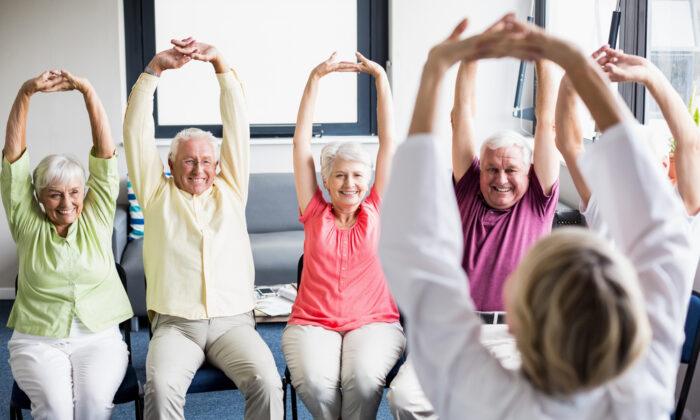Longitudinal survey data of more than 3,000 adolescents ages 11-14 recorded before and during the early months of the COVID-19 pandemic in 2020 found that supportive relationships with family and friends and healthy behaviors, like engaging in physical activity and better sleep, appeared to shield against the harmful effects of the pandemic on adolescents’ mental health.
The research, published today in the Journal of Adolescent Health, was supported by the National Institute on Drug Abuse (NIDA) and other entities at the National Institutes of Health. The research is based on data from the Adolescent Brain Cognitive Development (ABCD) Study(link is external), the largest long-term study of brain development and child health ever conducted in the United States.
“Early adolescence is a time when youth are already experiencing rapid change physically, emotionally, and socially, and the COVID-19 pandemic has caused immense disruption to this sensitive stage in life,” said Nora D. Volkow, M.D., director of NIDA. “This study helps us understand how modifiable lifestyle factors affect the mental health and well-being of adolescents, and it can inform the development of interventions to protect youth during a major life stress. This is important now, as we continue to grapple with the pandemic, and also in future crisis response at the local or national level.”In this study, investigators analyzed data from a longitudinal cohort of over 3,000 ABCD Study participants ages 11 to 14-years-old and their families. These young adolescents and their parents completed pre-pandemic assessments by February 2020, which documented baseline parent/caregiver reports of externalizing problems (e.g., acting aggressively, breaking rules) and sleep disturbances (e.g., sleep duration), and youth reports of internalizing problems (e.g., feeling anxious or depressed). Participating parents and youth then separately completed three online COVID-19 surveys, conducted between May and August 2020, which featured more than 200 items across psychosocial and lifestyle domains.
Researchers used machine learning methods to look for patterns of positive affect, anxiety, stress, and depressive symptoms across the surveys. They then interpreted the results through an algorithm to provide an overall ranking of variables according to their importance for predicting youth mental health outcomes. The top variables were categorized into eight domains: demographics; coping behaviors (e.g., having a regular mealtime); physical activities; relationships; resources (e.g., unable to afford food), screen time, sleep (e.g., pre-pandemic sleep disturbances), and other (e.g., pre-pandemic psychological problems).
Out of all the possible predictors considered, positive relationship variables, such as talking about plans for the coming day with parents, participating in family activities, and those related to healthy behaviors like physical activities and better sleep were among the top predictors of high positive affect and were also protective against stress, anxiety, and depression. Conversely, more screen time activities, including social media and video games, as well as witnessing racism or discrimination in relation to the coronavirus, emerged as important predictors for negative affect. The study also found that girls, and those who entered the pandemic with existing mental health or sleep problems, appeared to be particularly vulnerable to the negative impact of the COVID-19 pandemic.
“Focusing on what you can do to support young people, like maintaining as much of a routine as possible, walking at least 10 minutes a day, and strengthening family relationships, really matters during times of stress.” said Fiona C. Baker, Ph.D., director of the Center for Health Sciences at SRI International, Menlo Park, California, and principal investigator of the ABCD study site at SRI.
The authors also note that compared to the full ABCD Study sample of about 11,800 people at study entry, this study included only a sub-sample of 3,000 youth with sufficient data from the pre-pandemic ABCD assessments and COVID-19 surveys. Compared to the full ABCD Study, this sub-sample of youth was less likely to be Hispanic/Latino (16% vs. 20%), less likely to be Black (7% vs. 15%), more likely to be Asian (5% vs. 4%), and their parents were more likely to have higher education (e.g., having a postgraduate degree 42% vs. 34%). Generalizability of this study is therefore limited by the fact that the sample is not representative of the U.S. population.
“This additional COVID data collection is also a valuable example of how the ABCD study team was able to effectively pivot within such a massive project, to leverage this important learning opportunity during the pandemic,” said Orsolya Kiss, Ph.D., a postdoctoral fellow at SRI International and lead author of the study.
Further, machine learning techniques allowed the data itself to drive the findings, rather than expectations or hypotheses. While the team informed the structure of what data was incorporated from before and during the pandemic, the model then determined what was important.”
The Adolescent Brain Cognitive Development Study and ABCD Study are registered trademarks and service marks, respectively, of the U.S. Department of Health and Human Services (HHS).





